Along their country’s over 3,000km-long coastline, Vietnamese fishermen, particularly those in the Central region, use different rudimentary tools for their inshore fishing. One such tool that seems to fascinate visitors unfamiliar with the inshore fishing trade is the coracle. nbsp;
|
Along
their country’s over 3,000km-long coastline, Vietnamese fishermen,
particularly those in the Central region, use different rudimentary tools
for their inshore fishing. One such tool that seems to fascinate visitors
unfamiliar with the inshore fishing trade is the coracle.nbsp;
nbsp;
Constructing coracles is a trade that has been left to
experienced craftsmen who acquired their unique knowledge from their
forefathers. These craftsmen possess two very necessary traits to be successful in
the trade, strong and nimble fingers and the ability to select the
best material for the job.
|

Making coracles.
|
|
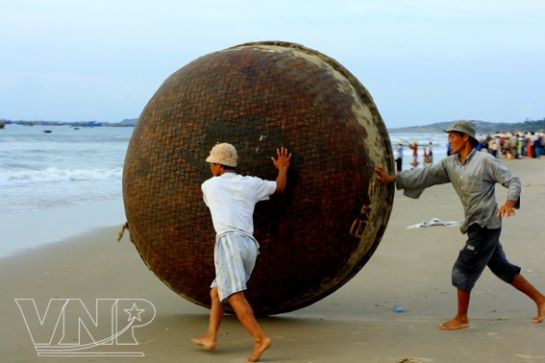
Such a good
way of bringing the coracles to the seashore.
|
|
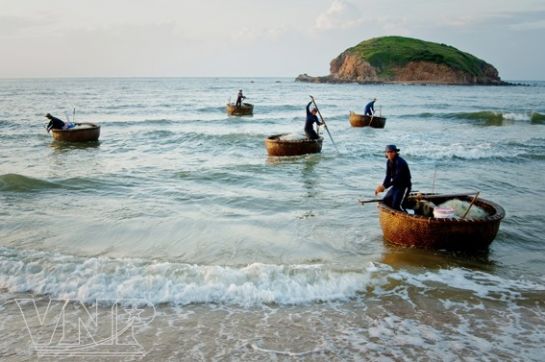
Rowing
coracles offshore.
|
|
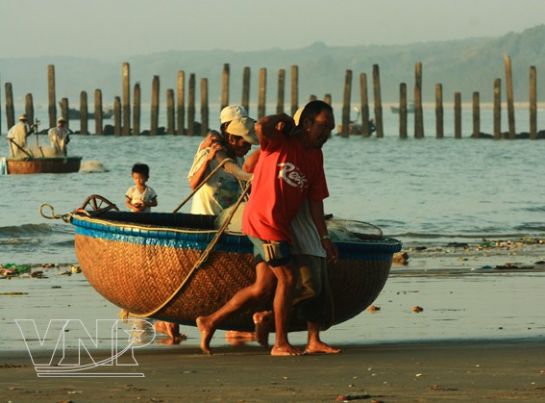
Carrying the
coracle ashore after each fishing trip.
|
|

A fishing
village in the coastalBinhThuanProvince.
|
|
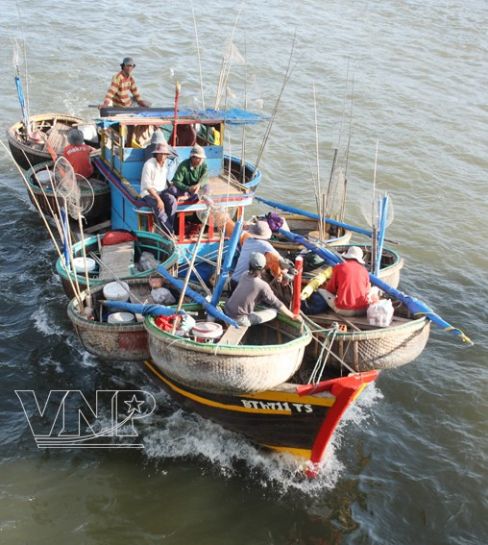
A boat can carry several coracles
along and release them offshore.
|
|
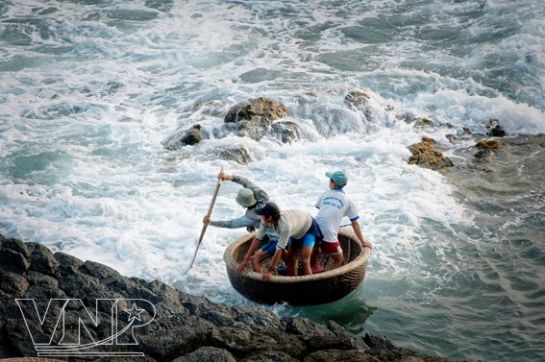
Rowing the coracle over the sea waves is really
an exciting experience.
| |
|
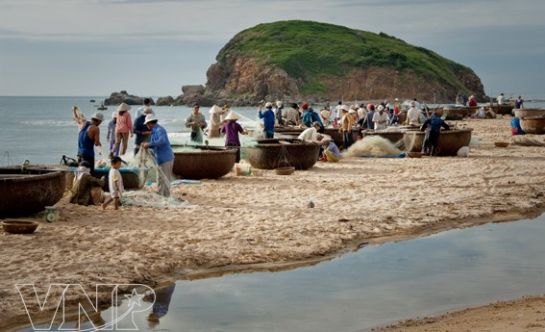
After each inshore fishing trip, the
fishermen bring the coracles ashore
and the sea catch to the
market for sale.
|
|
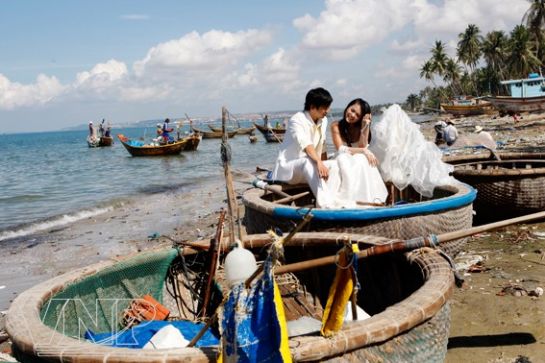
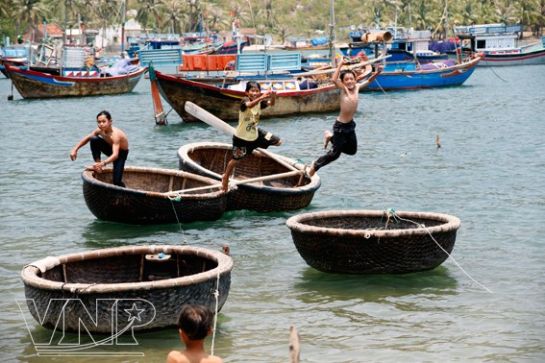
The coracle can become a romantic setting
for the couple’s photographing on their wedding,
a play game for
children, or an entertainment for young people.
|
|
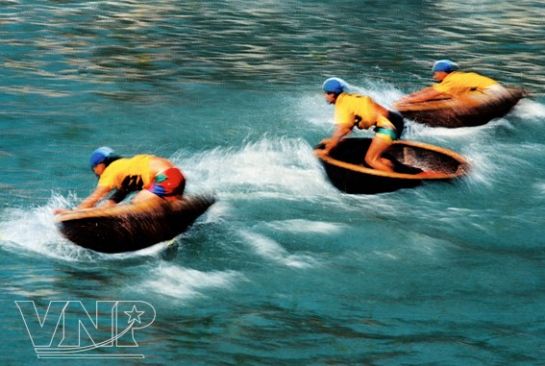
A coracle race during
Cau Ngu (whale worshipping) Festival in Phan Thiet.
|
nbsp;nbsp;nbsp;
Before the
construction can begin the craftsmen must cut the selected bamboo to size
and treat its outer skin, enabling it to absorb otter fat that will be
applied later to prevent the coracle from leaking. The bamboo is then
split into straps that are dried under the hot sun and then exposed to the
dew over two nights to flatten. It is essential to keep the straps from
getting wet with rain-water to prevent cracking. During the rainy season
the drying process takes place in the house. Once the straps are dried the
coracle construction begins. This takes place at the mould that is set up
in the craftsmen’s garden.
Depending on where they live along the coast and the
type of fishing they are involved in, the fishermen use the coracle in
different ways. On Ly Son Island in
Quang
Ngai
Province the coracle is used to
catch cuttlefish. On a normal fishing day a large boat will carry 8 to 10
coracles out to sea and throw them overboard at a predetermined spot
thought to be rich with cuttlefish. With one fisherman per coracle, the
crafts head out in a straight line, each staying in a prescribed area to
prevent overlapping. The fishermen will either dive for the fish or catch
them in nets.
Meanwhile,
fishermen in the central
provinces of
Binh Thuan and Ninh Thuan, or in Long Hai District in the Southern
province of
Ba Ria-Vung Tau not
only use the coracles for their offshore fishing, but also for inshore
fishing, such as diving for oysters and fishing with
nets.
The coracle is
also used as a “mobile shop” to supply food and other necessities to
fishermen anchored offshore, or for buyers to paddle out to anchored boats
that have returned from fishing trips to purchase sea catch. nbsp;
Last but
not least, the coracles are used by participants at race competitions held
by the fishing villages during their traditional festivals.
Story: Huu Thanh
Photos: Kim Son –
Minh Quoc – Huu Thanh
Huu Thanh - Kim Son, Minh Quoc, Huu Thanh